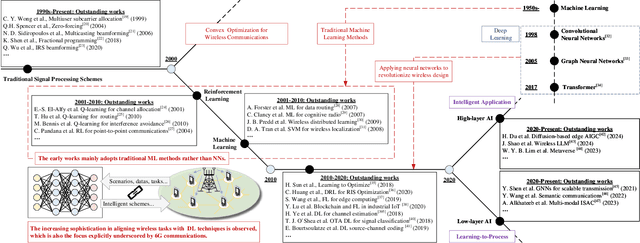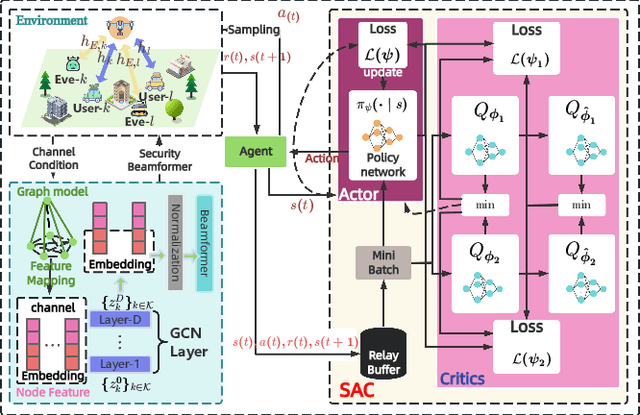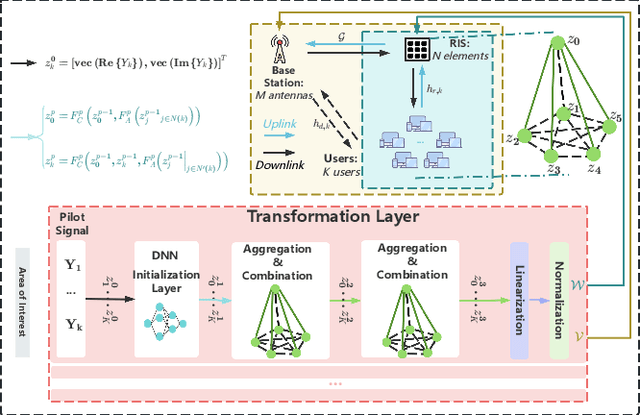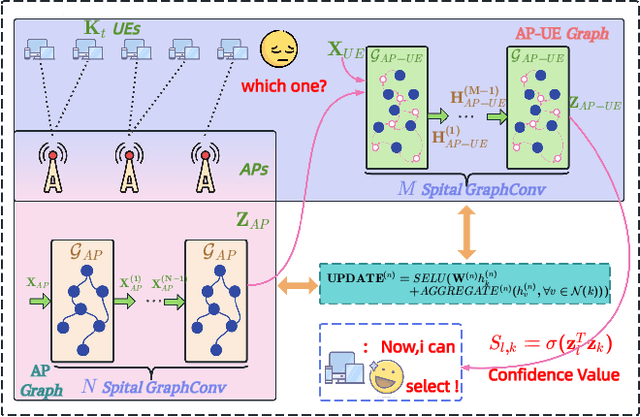Chang Liu
The Institute of Statistical Mathematics
TimeSearch-R: Adaptive Temporal Search for Long-Form Video Understanding via Self-Verification Reinforcement Learning
Nov 07, 2025Abstract:Temporal search aims to identify a minimal set of relevant frames from tens of thousands based on a given query, serving as a foundation for accurate long-form video understanding. Existing works attempt to progressively narrow the search space. However, these approaches typically rely on a hand-crafted search process, lacking end-to-end optimization for learning optimal search strategies. In this paper, we propose TimeSearch-R, which reformulates temporal search as interleaved text-video thinking, seamlessly integrating searching video clips into the reasoning process through reinforcement learning (RL). However, applying RL training methods, such as Group Relative Policy Optimization (GRPO), to video reasoning can result in unsupervised intermediate search decisions. This leads to insufficient exploration of the video content and inconsistent logical reasoning. To address these issues, we introduce GRPO with Completeness Self-Verification (GRPO-CSV), which gathers searched video frames from the interleaved reasoning process and utilizes the same policy model to verify the adequacy of searched frames, thereby improving the completeness of video reasoning. Additionally, we construct datasets specifically designed for the SFT cold-start and RL training of GRPO-CSV, filtering out samples with weak temporal dependencies to enhance task difficulty and improve temporal search capabilities. Extensive experiments demonstrate that TimeSearch-R achieves significant improvements on temporal search benchmarks such as Haystack-LVBench and Haystack-Ego4D, as well as long-form video understanding benchmarks like VideoMME and MLVU. Notably, TimeSearch-R establishes a new state-of-the-art on LongVideoBench with 4.1% improvement over the base model Qwen2.5-VL and 2.0% over the advanced video reasoning model Video-R1. Our code is available at https://github.com/Time-Search/TimeSearch-R.
BoRe-Depth: Self-supervised Monocular Depth Estimation with Boundary Refinement for Embedded Systems
Nov 06, 2025Abstract:Depth estimation is one of the key technologies for realizing 3D perception in unmanned systems. Monocular depth estimation has been widely researched because of its low-cost advantage, but the existing methods face the challenges of poor depth estimation performance and blurred object boundaries on embedded systems. In this paper, we propose a novel monocular depth estimation model, BoRe-Depth, which contains only 8.7M parameters. It can accurately estimate depth maps on embedded systems and significantly improves boundary quality. Firstly, we design an Enhanced Feature Adaptive Fusion Module (EFAF) which adaptively fuses depth features to enhance boundary detail representation. Secondly, we integrate semantic knowledge into the encoder to improve the object recognition and boundary perception capabilities. Finally, BoRe-Depth is deployed on NVIDIA Jetson Orin, and runs efficiently at 50.7 FPS. We demonstrate that the proposed model significantly outperforms previous lightweight models on multiple challenging datasets, and we provide detailed ablation studies for the proposed methods. The code is available at https://github.com/liangxiansheng093/BoRe-Depth.
GTCN-G: A Residual Graph-Temporal Fusion Network for Imbalanced Intrusion Detection (Preprint)
Oct 08, 2025Abstract:The escalating complexity of network threats and the inherent class imbalance in traffic data present formidable challenges for modern Intrusion Detection Systems (IDS). While Graph Neural Networks (GNNs) excel in modeling topological structures and Temporal Convolutional Networks (TCNs) are proficient in capturing time-series dependencies, a framework that synergistically integrates both while explicitly addressing data imbalance remains an open challenge. This paper introduces a novel deep learning framework, named Gated Temporal Convolutional Network and Graph (GTCN-G), engineered to overcome these limitations. Our model uniquely fuses a Gated TCN (G-TCN) for extracting hierarchical temporal features from network flows with a Graph Convolutional Network (GCN) designed to learn from the underlying graph structure. The core innovation lies in the integration of a residual learning mechanism, implemented via a Graph Attention Network (GAT). This mechanism preserves original feature information through residual connections, which is critical for mitigating the class imbalance problem and enhancing detection sensitivity for rare malicious activities (minority classes). We conducted extensive experiments on two public benchmark datasets, UNSW-NB15 and ToN-IoT, to validate our approach. The empirical results demonstrate that the proposed GTCN-G model achieves state-of-the-art performance, significantly outperforming existing baseline models in both binary and multi-class classification tasks.
Probing the Critical Point (CritPt) of AI Reasoning: a Frontier Physics Research Benchmark
Oct 01, 2025Abstract:While large language models (LLMs) with reasoning capabilities are progressing rapidly on high-school math competitions and coding, can they reason effectively through complex, open-ended challenges found in frontier physics research? And crucially, what kinds of reasoning tasks do physicists want LLMs to assist with? To address these questions, we present the CritPt (Complex Research using Integrated Thinking - Physics Test, pronounced "critical point"), the first benchmark designed to test LLMs on unpublished, research-level reasoning tasks that broadly covers modern physics research areas, including condensed matter, quantum physics, atomic, molecular & optical physics, astrophysics, high energy physics, mathematical physics, statistical physics, nuclear physics, nonlinear dynamics, fluid dynamics and biophysics. CritPt consists of 71 composite research challenges designed to simulate full-scale research projects at the entry level, which are also decomposed to 190 simpler checkpoint tasks for more fine-grained insights. All problems are newly created by 50+ active physics researchers based on their own research. Every problem is hand-curated to admit a guess-resistant and machine-verifiable answer and is evaluated by an automated grading pipeline heavily customized for advanced physics-specific output formats. We find that while current state-of-the-art LLMs show early promise on isolated checkpoints, they remain far from being able to reliably solve full research-scale challenges: the best average accuracy among base models is only 4.0% , achieved by GPT-5 (high), moderately rising to around 10% when equipped with coding tools. Through the realistic yet standardized evaluation offered by CritPt, we highlight a large disconnect between current model capabilities and realistic physics research demands, offering a foundation to guide the development of scientifically grounded AI tools.
Enhancing Vehicle Detection under Adverse Weather Conditions with Contrastive Learning
Sep 26, 2025Abstract:Aside from common challenges in remote sensing like small, sparse targets and computation cost limitations, detecting vehicles from UAV images in the Nordic regions faces strong visibility challenges and domain shifts caused by diverse levels of snow coverage. Although annotated data are expensive, unannotated data is cheaper to obtain by simply flying the drones. In this work, we proposed a sideload-CL-adaptation framework that enables the use of unannotated data to improve vehicle detection using lightweight models. Specifically, we propose to train a CNN-based representation extractor through contrastive learning on the unannotated data in the pretraining stage, and then sideload it to a frozen YOLO11n backbone in the fine-tuning stage. To find a robust sideload-CL-adaptation, we conducted extensive experiments to compare various fusion methods and granularity. Our proposed sideload-CL-adaptation model improves the detection performance by 3.8% to 9.5% in terms of mAP50 on the NVD dataset.
Investigating Student Interaction Patterns with Large Language Model-Powered Course Assistants in Computer Science Courses
Sep 10, 2025Abstract:Providing students with flexible and timely academic support is a challenge at most colleges and universities, leaving many students without help outside scheduled hours. Large language models (LLMs) are promising for bridging this gap, but interactions between students and LLMs are rarely overseen by educators. We developed and studied an LLM-powered course assistant deployed across multiple computer science courses to characterize real-world use and understand pedagogical implications. By Spring 2024, our system had been deployed to approximately 2,000 students across six courses at three institutions. Analysis of the interaction data shows that usage remains strong in the evenings and nights and is higher in introductory courses, indicating that our system helps address temporal support gaps and novice learner needs. We sampled 200 conversations per course for manual annotation: most sampled responses were judged correct and helpful, with a small share unhelpful or erroneous; few responses included dedicated examples. We also examined an inquiry-based learning strategy: only around 11% of sampled conversations contained LLM-generated follow-up questions, which were often ignored by students in advanced courses. A Bloom's taxonomy analysis reveals that current LLM capabilities are limited in generating higher-order cognitive questions. These patterns suggest opportunities for pedagogically oriented LLM-based educational systems and greater educator involvement in configuring prompts, content, and policies.
MobileRAG: Enhancing Mobile Agent with Retrieval-Augmented Generation
Sep 04, 2025Abstract:Smartphones have become indispensable in people's daily lives, permeating nearly every aspect of modern society. With the continuous advancement of large language models (LLMs), numerous LLM-based mobile agents have emerged. These agents are capable of accurately parsing diverse user queries and automatically assisting users in completing complex or repetitive operations. However, current agents 1) heavily rely on the comprehension ability of LLMs, which can lead to errors caused by misoperations or omitted steps during tasks, 2) lack interaction with the external environment, often terminating tasks when an app cannot fulfill user queries, and 3) lack memory capabilities, requiring each instruction to reconstruct the interface and being unable to learn from and correct previous mistakes. To alleviate the above issues, we propose MobileRAG, a mobile agents framework enhanced by Retrieval-Augmented Generation (RAG), which includes InterRAG, LocalRAG, and MemRAG. It leverages RAG to more quickly and accurately identify user queries and accomplish complex and long-sequence mobile tasks. Additionally, to more comprehensively assess the performance of MobileRAG, we introduce MobileRAG-Eval, a more challenging benchmark characterized by numerous complex, real-world mobile tasks that require external knowledge assistance. Extensive experimental results on MobileRAG-Eval demonstrate that MobileRAG can easily handle real-world mobile tasks, achieving 10.3\% improvement over state-of-the-art methods with fewer operational steps. Our code is publicly available at: https://github.com/liuxiaojieOutOfWorld/MobileRAG_arxiv
Addressing Graph Anomaly Detection via Causal Edge Separation and Spectrum
Aug 20, 2025


Abstract:In the real world, anomalous entities often add more legitimate connections while hiding direct links with other anomalous entities, leading to heterophilic structures in anomalous networks that most GNN-based techniques fail to address. Several works have been proposed to tackle this issue in the spatial domain. However, these methods overlook the complex relationships between node structure encoding, node features, and their contextual environment and rely on principled guidance, research on solving spectral domain heterophilic problems remains limited. This study analyzes the spectral distribution of nodes with different heterophilic degrees and discovers that the heterophily of anomalous nodes causes the spectral energy to shift from low to high frequencies. To address the above challenges, we propose a spectral neural network CES2-GAD based on causal edge separation for anomaly detection on heterophilic graphs. Firstly, CES2-GAD will separate the original graph into homophilic and heterophilic edges using causal interventions. Subsequently, various hybrid-spectrum filters are used to capture signals from the segmented graphs. Finally, representations from multiple signals are concatenated and input into a classifier to predict anomalies. Extensive experiments with real-world datasets have proven the effectiveness of the method we proposed.
Agentic Graph Neural Networks for Wireless Communications and Networking Towards Edge General Intelligence: A Survey
Aug 12, 2025



Abstract:The rapid advancement of communication technologies has driven the evolution of communication networks towards both high-dimensional resource utilization and multifunctional integration. This evolving complexity poses significant challenges in designing communication networks to satisfy the growing quality-of-service and time sensitivity of mobile applications in dynamic environments. Graph neural networks (GNNs) have emerged as fundamental deep learning (DL) models for complex communication networks. GNNs not only augment the extraction of features over network topologies but also enhance scalability and facilitate distributed computation. However, most existing GNNs follow a traditional passive learning framework, which may fail to meet the needs of increasingly diverse wireless systems. This survey proposes the employment of agentic artificial intelligence (AI) to organize and integrate GNNs, enabling scenario- and task-aware implementation towards edge general intelligence. To comprehend the full capability of GNNs, we holistically review recent applications of GNNs in wireless communications and networking. Specifically, we focus on the alignment between graph representations and network topologies, and between neural architectures and wireless tasks. We first provide an overview of GNNs based on prominent neural architectures, followed by the concept of agentic GNNs. Then, we summarize and compare GNN applications for conventional systems and emerging technologies, including physical, MAC, and network layer designs, integrated sensing and communication (ISAC), reconfigurable intelligent surface (RIS) and cell-free network architecture. We further propose a large language model (LLM) framework as an intelligent question-answering agent, leveraging this survey as a local knowledge base to enable GNN-related responses tailored to wireless communication research.
MOSEv2: A More Challenging Dataset for Video Object Segmentation in Complex Scenes
Aug 07, 2025Abstract:Video object segmentation (VOS) aims to segment specified target objects throughout a video. Although state-of-the-art methods have achieved impressive performance (e.g., 90+% J&F) on existing benchmarks such as DAVIS and YouTube-VOS, these datasets primarily contain salient, dominant, and isolated objects, limiting their generalization to real-world scenarios. To advance VOS toward more realistic environments, coMplex video Object SEgmentation (MOSEv1) was introduced to facilitate VOS research in complex scenes. Building on the strengths and limitations of MOSEv1, we present MOSEv2, a significantly more challenging dataset designed to further advance VOS methods under real-world conditions. MOSEv2 consists of 5,024 videos and over 701,976 high-quality masks for 10,074 objects across 200 categories. Compared to its predecessor, MOSEv2 introduces significantly greater scene complexity, including more frequent object disappearance and reappearance, severe occlusions and crowding, smaller objects, as well as a range of new challenges such as adverse weather (e.g., rain, snow, fog), low-light scenes (e.g., nighttime, underwater), multi-shot sequences, camouflaged objects, non-physical targets (e.g., shadows, reflections), scenarios requiring external knowledge, etc. We benchmark 20 representative VOS methods under 5 different settings and observe consistent performance drops. For example, SAM2 drops from 76.4% on MOSEv1 to only 50.9% on MOSEv2. We further evaluate 9 video object tracking methods and find similar declines, demonstrating that MOSEv2 presents challenges across tasks. These results highlight that despite high accuracy on existing datasets, current VOS methods still struggle under real-world complexities. MOSEv2 is publicly available at https://MOSE.video.
 Add to Chrome
Add to Chrome Add to Firefox
Add to Firefox Add to Edge
Add to Edge